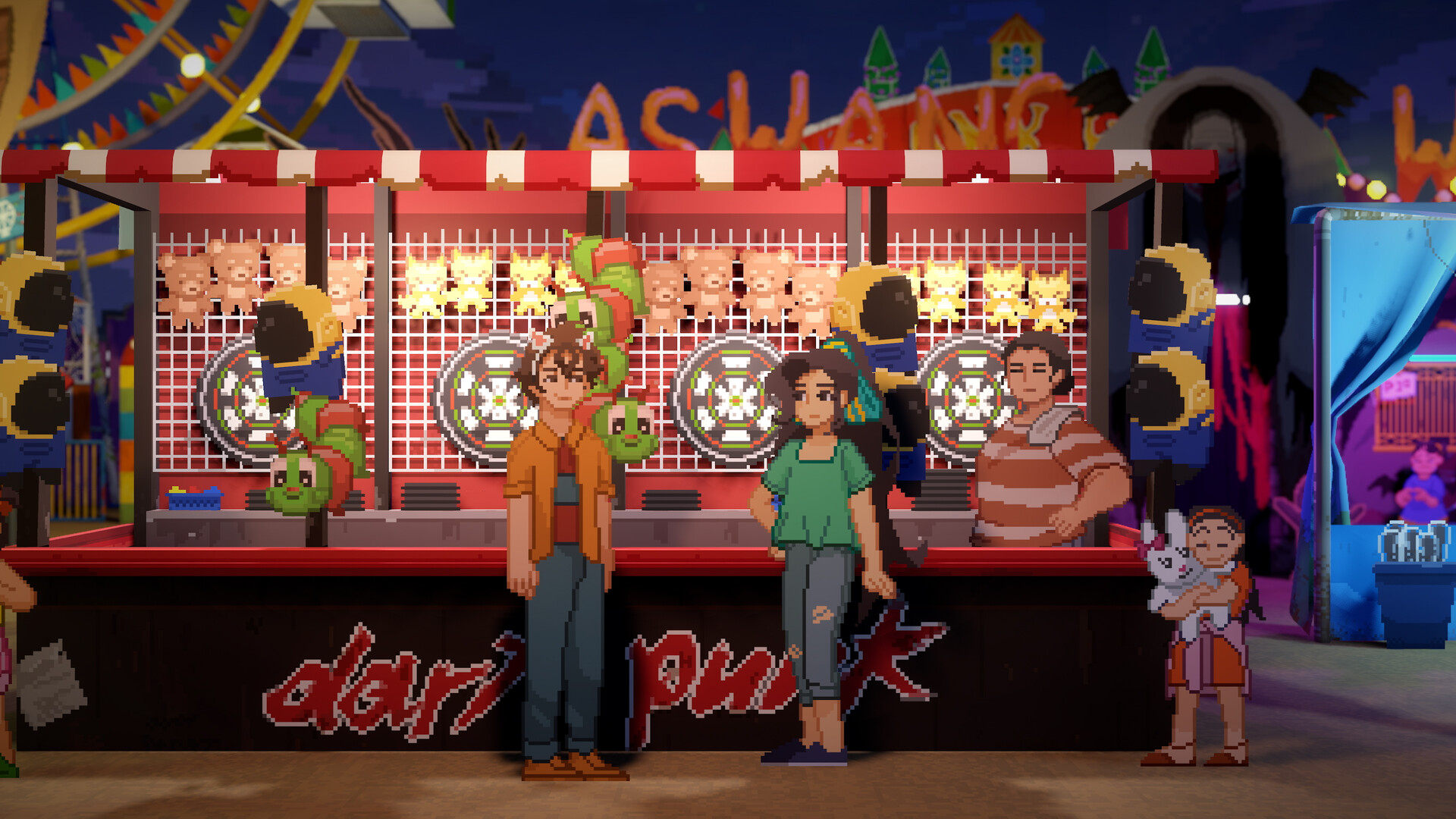Set in a world recovering from tragedy and telling the coming-of-age story of a teenager whose life changes after a chance encounter, Until Then is looking like a promising adventure game in all that we’ve seen of it so far. Add to that the game’s gorgeous pixel art aesthetic, the way it ropes social media into its story, and the cinematic and thematic depth it’s promising, and Until Then is certainly looking like an exciting prospect, especially for fans of narrative-driven gaming experiences. To learn more about the game and what’ll make it tick, we recently had the opportunity to send some of our questions about it to its developers. Below, you can read our interview with game director Mickole Klein Nulud.

“The setting does complement the experience, for sure, but our writing always puts the characters first so we think more of that coming-of-age side will seep through the stories of and interactions between characters.”
Until Then’s part-retro, part-modern aesthetic is an instantly striking one, and it’s definitely looking like one of the game’s bigger highlights. How did you land on this look for the game?
Before development began, I was very inspired by pixel art in general as a medium. When I saw The Last Night with its innovative use of pixel art in 3D space and gorgeous graphics, it pretty much set into stone the unique look I was looking for.
Until Then is promising some very interesting things with its setting, from how the world is reeling from a recent catastrophe to its Philippine-inspired locations and culture. What inspired the game’s setting, and how will those unique elements come together in service of the story?
Besides wanting to make a game that represents our country, having a core team of all Filipinos, our youth and our own experiences growing up here shaped the environments in the game. Though honestly, the story, generally speaking, is one that can take place anywhere, which is by intention since we want to tell a story that will strike a chord with everyone. However, we do have specific elements sprinkled in like Filipino pop references, cultural and local stuff, and we think this adds a unique charm and personality to the story and the game as a whole.
A coming-of-age high school story always seems rife for great emotional, narrative depth, and that seems to be at the core of the story that Until Then is telling. How much of that will be through the setting, and how much will be done through more personal and intimate stories between characters?
In our writing, it’s definitely more character-driven than, say, setting-driven. The setting does complement the experience, for sure, but our writing always puts the characters first so we think more of that coming-of-age side will seep through the stories of and interactions between characters.
How much of an emphasis will the game place on choice-and-consequence mechanics? How will the story be impacted by players’ actions?
Actually, not much, and that’s by design. Some choices may have some sort of effect that’s just plain fun or just to make the world feel a little more alive, but in the end, it’s the sort of story that puts the authors’ intentions first so we can better represent the themes we’re going for.

“Some choices may have some sort of effect that’s just plain fun or just to make the world feel a little more alive, but in the end, it’s the sort of story that puts the authors’ intentions first so we can better represent the themes we’re going for.”
It also looks like social media in particular will be an important element of the game. Can you tell us how it’s implemented mechanically speaking, and how it ties into the storytelling?
Mechanically, it’s simple. The phone and social media show up when we feel like it will do service to the story. Without spoiling anything, one of my favorite uses of the phone is where it makes you (and the protagonist) feel infinitely more lonely despite living in an increasingly connected world. Another favorite use of mine is how we tell more about the characters, more than dialogue alone can, through what they post online and their typing mannerisms.
What can you tell us about Until Then’s minigames? How varied will the game’s collection of minigames be, and what has your overall approach been while designing them?
Pretty varied, ranging from our own mundane experiences (like buying a train ticket) to gamified cultural things (like videoke machines, which Filipinos are obsessed with). As a story-rich game, these minigames start their life in our screenplay drafts when we think they service that part of the story in some meaningful (or in a just-for-fun) way.
Roughly how long will an average playthrough of Until Then be?
Around 15-20 hours.










